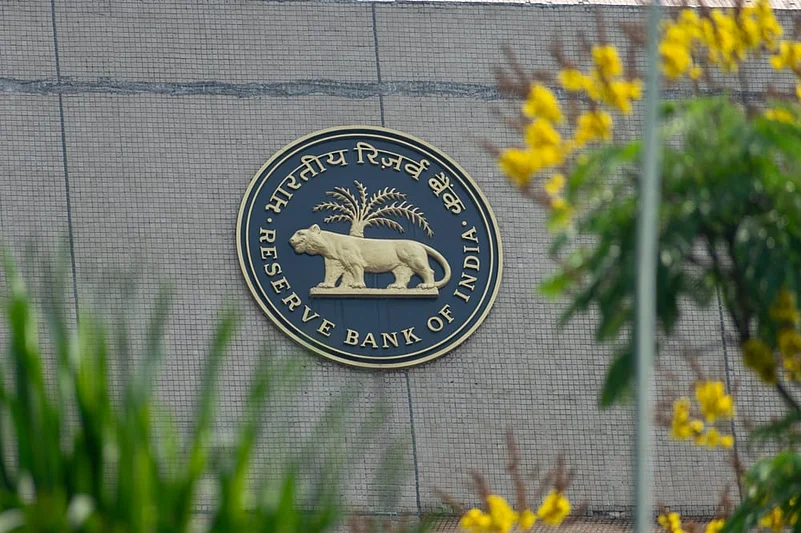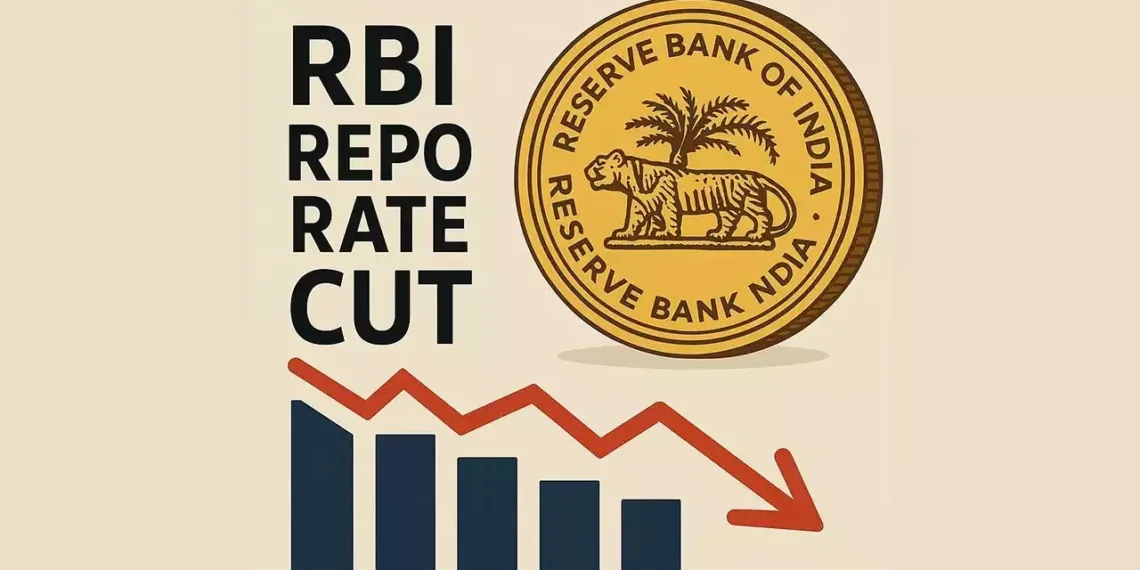The Reserve Bank of India has just delivered a significant monetary policy shift that could reshape investment strategies across the nation. In its April meeting, the RBI reduced the repo rate by 25 basis points to 6% and—perhaps more importantly—changed its stance from ‘neutral’ to ‘accommodative,’ signaling a potentially extended easing cycle ahead. As an investor, understanding these monetary policy shifts is crucial for positioning your portfolio in this changing landscape.
Table of Contents
RBI Rate Cut Impact: Growth Takes Center Stage
The RBI’s decision to implement its second consecutive rate cut in 2025 reveals a clear pivot toward prioritizing economic growth amid mounting global uncertainties. Governor Shaktikanta Das emphasized the central bank’s commitment to supporting domestic demand while keeping inflation within its target range.
“This marks the start of a more supportive monetary cycle,” noted Anirudh Garg, Partner and Fund Manager at Invasset PMS. “RBI has signaled its intent: revive growth while keeping inflation in check.”
The central bank’s growing confidence in inflation management is evident in its revised forecasts, with the FY26 inflation projection lowered to 4% from 4.2%. This optimism has provided room for the RBI to focus on stimulating economic activity, even as it slightly trimmed its GDP growth forecast to 6.5% from 6.7%, acknowledging the headwinds from global economic uncertainty.
Market Response to the RBI Rate Cut
Despite the broadly positive implications of an accommodative monetary stance, financial markets reacted with caution. The Nifty Bank index slipped nearly 1% following the announcement, with public sector banks like State Bank of India and Bank of Baroda experiencing sharper declines of around 2%.
The most dramatic market movements came from gold loan financiers, with Muthoot Finance and IIFL Finance plunging up to 9% after the RBI indicated plans to introduce tighter regulations for gold-backed loans. This sector-specific reaction highlights the importance of understanding the nuanced implications of monetary policy beyond the headline rate change.
| Sector | Immediate Market Reaction | Long-Term Outlook |
|---|---|---|
| Banking (Overall) | Negative (Nifty Bank -1%) | Mixed – Lower margins but higher loan growth |
| PSU Banks | Sharp decline (-2%) | Potential benefit from economic recovery |
| Gold Loan NBFCs | Steep fall (up to -9%) | Challenging – Regulatory headwinds |
| Consumer Finance NBFCs | Positive | Favorable – Lower borrowing costs |
| Real Estate | Neutral to positive | Strong – Lower mortgage rates |
| Consumer Durables | Neutral | Positive – Increased purchase financing |
| Automotive | Slight positive | Favorable – Lower vehicle loan rates |
Transmission Timeline: When Will Borrowers Feel Relief?
While rate cuts grab headlines, the real-world impact depends on how quickly and completely these reductions are passed on to borrowers. Naveen Kulkarni, Chief Investment Officer at Axis Securities PMS, notes that the transmission process may be somewhat delayed:
“Systemic liquidity has been in deficit for the more significant part of the quarter, though it eased into surplus as banks exit Q4FY25. We expect the transmission on the cost of funding side to be slower vs the pace of transmission on the yields.”
This observation suggests that while lending rates may begin declining soon, the full benefit of lower borrowing costs might take several months to materialize, particularly for existing borrowers with fixed-rate loans. New borrowers, however, could see more immediate benefits as banks compete for high-quality credit opportunities.
Beneficiaries of the Accommodative Stance
Beyond the immediate rate cut, the shift to an accommodative stance carries significant implications for various sectors:
- Consumer Finance NBFCs: Companies like Bajaj Finance, Shriram Finance, and Cholamandalam Investment & Finance stand to benefit from both lower borrowing costs and the RBI’s decision to roll back higher risk weights on bank loans to NBFCs.
- Real Estate and Construction: Lower home loan rates typically stimulate housing demand, benefiting developers, building material suppliers, and ancillary industries.
- Automotive Sector: Reduced auto loan rates could help revive demand in a sector that has faced challenges in recent quarters.
- Capital Goods and Infrastructure: As overall borrowing costs decrease, capital-intensive projects become more viable, potentially boosting orders for equipment manufacturers.
For investors, this policy shift suggests positioning portfolios toward rate-sensitive and domestic consumption-oriented sectors while remaining cautious about entities with potential regulatory headwinds.

Looking Ahead: More Cuts on the Horizon?
Market analysts are now anticipating further monetary easing, with consensus expectations pointing to an additional 50 basis points of rate cuts over the next three MPC meetings. This gradual but sustained easing cycle could provide ongoing support for equity markets, particularly if it succeeds in stimulating economic activity without reigniting inflation.
Anil Rego, Founder and Fund Manager at Right Horizons, notes: “This policy shift is likely to lower borrowing costs, boost liquidity, and support domestic demand. While short-term volatility may keep markets cautious, the accommodative tilt, rural revival, and a recovering earnings cycle could offer support—especially for rate-sensitive and domestic-focused stocks.”
However, significant risks remain on the horizon. The RBI’s growth forecast reduction acknowledges the potential impact of global economic challenges, including the recent implementation of U.S. tariffs. The central bank will need to maintain flexibility in its approach, ready to adjust course if inflation pressures resurface or global financial conditions tighten unexpectedly.
Investment Strategy in an Accommodative Environment
For investors navigating this shifting monetary landscape, several strategic considerations emerge:
- Gradual Rotation Toward Cyclicals: As monetary easing feeds through to the real economy, sectors tied to the domestic economic cycle may outperform defensive plays.
- Focus on Quality in Rate-Sensitive Sectors: While lower rates generally benefit banks and NBFCs, focus on entities with strong asset quality, diversified loan books, and robust capital positions.
- Watch Liquidity Indicators: The pace of monetary transmission will depend significantly on system-wide liquidity conditions. Monitor the RBI’s liquidity management operations alongside the repo rate decisions.
- Balance Sheet Deleveraging Opportunities: Companies with high debt loads may use this window to refinance at lower rates, potentially improving financial health and equity valuations.
- Remain Alert to Inflation Risks: The easing cycle assumes continued moderate inflation. Any significant uptick in price pressures could prompt a policy reversal.
The RBI’s second rate cut and accommodative stance signal its commitment to supporting economic growth while capitalizing on the current favorable inflation environment. For investors, this evolving monetary landscape presents both opportunities and challenges, requiring nimble positioning across asset classes and sectors.
Read more: Petrol Diesel Excise Duty Hike: Why is Modi govt increasing despite global oil prices decreasing?
FAQs About the RBI Repo Rate Cut 2025
What is the current repo rate after the RBI’s latest cut?
Following the April 2025 monetary policy decision, the RBI has reduced the repo rate by 25 basis points to 6%.
What does the RBI’s ‘accommodative’ stance mean?
An accommodative stance indicates that the RBI is biased toward further rate cuts in upcoming policy meetings to support economic growth, as opposed to a neutral stance where the direction of future policy moves is uncertain.
How will the rate cut affect home loan interest rates?
Home loan interest rates are expected to decrease gradually in the coming months as banks pass on the benefit of lower borrowing costs. New borrowers may see immediate benefits, while existing borrowers on floating rates will see adjustments based on their reset dates.
Which sectors are likely to benefit most from the RBI’s accommodative stance?
Rate-sensitive sectors like real estate, automobiles, consumer durables, and NBFCs typically benefit most from interest rate reductions. Companies with high debt levels may also see improved profitability through lower interest costs.
Why did gold loan NBFCs like Muthoot Finance see sharp stock price declines despite the rate cut?
Gold loan NBFCs faced selling pressure after the RBI indicated plans to introduce tighter regulations specifically for gold-backed loans, which could potentially impact their business models and growth prospects.








